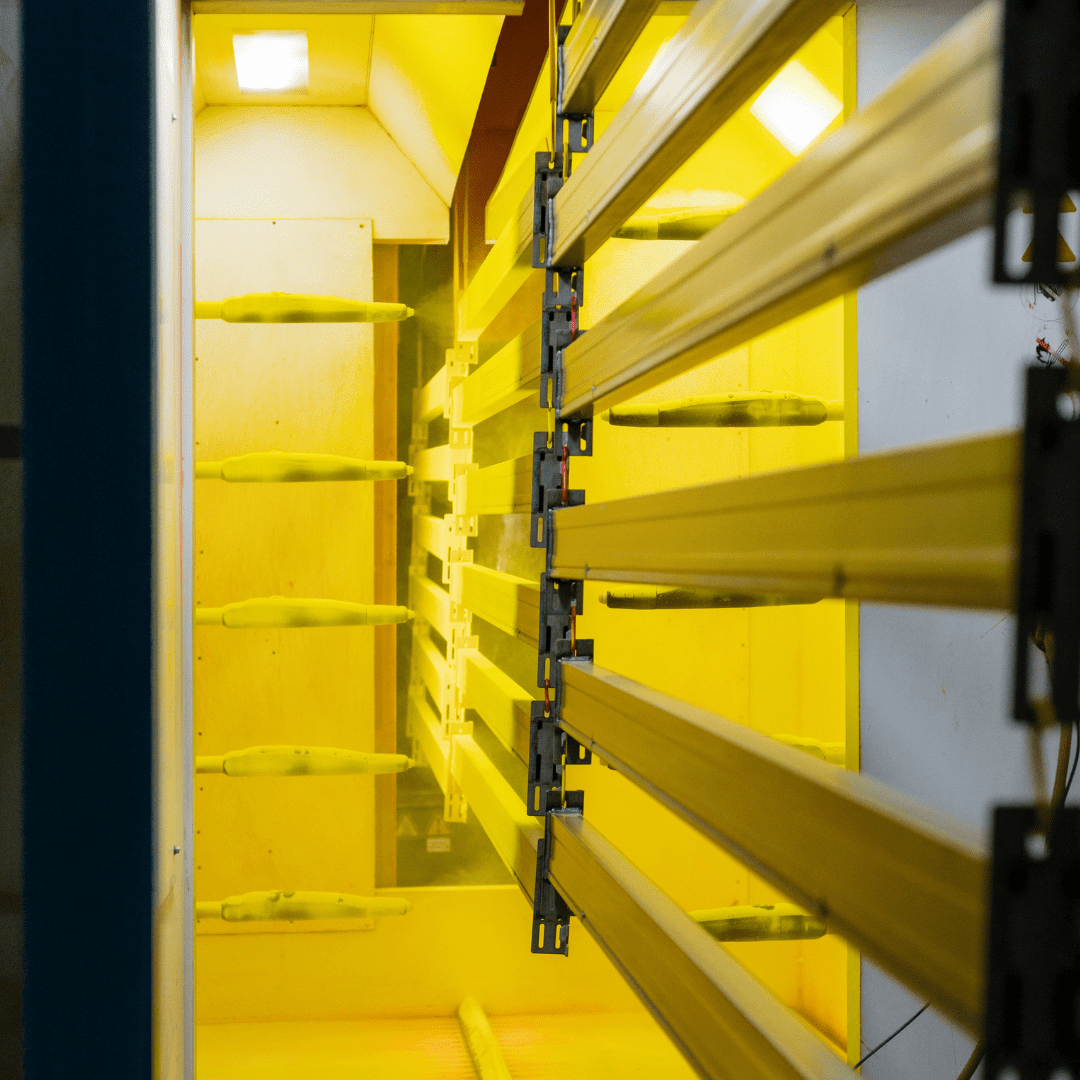According to ICI Online:
Many people have their preconceived notions about powder coating which are not all very accurate. Before discussing the top 5 myths about powder coating, let’s go over the process and how it works.
What is powder coat?
Powder coating is a type of coating that is applied as a free-flowing, dry powder. The main difference between conventional paint and powder coating is that powder coating does not require a solvent to keep the binder and filler parts in a liquid suspension form. The result is a paint-like finish.
Once a metal is prepared for powder coat, depending on the application process, a powder is applied to the metal with an electrostatic gun, this creates a positive electric charge and when sprayed on the metal part, adheres to the metal. Once applied, the metal part goes into a sizeable hi-temp oven where it melts down and creates a film.
Myth #1. Powder coat doesn’t crack or chip.
Although powder coat creates a film over the part, it, unfortunately, is not damage proof. Like many materials, under certain conditions powder coat can crack or chip and then peel away like an eggshell. Even when the powder coating is applied correctly, the environment can play a role in the effectiveness of the coating. Extreme heat, cold, or rough grainy substances, such as dirt, or salt may corrode the coating faster than you intended.
Myth #2. Powder coat can be applied to the same materials as wet paint.
Although used as an alternative to wet paint, this is not the case for all materials. Earlier, when I talked about the powder coat process, you can see why it would not work on materials such as plaster, wood, rubber and other non-compatible electrostatic materials. The primary utilization for powder coat is on metals.
Myth #3. Powder Coat is great for covering imperfections.
This one is a little tricky because the powder coat applies to the top of a surface, it seems logical that it would hide flaws. If there is discoloration on the surface, the powder coat can usually cover that depending on the color of the blemish. However, if the surface is scratched, dented, or has other imperfections the powder coat will not hide these. Powder Coat can end up drawing attention to such flaws.
Myth #4. Powder coat has a quicker dry and cure time than wet paint.
Powder coat does not have a dry time, only a cure time. The powder remains dry during the entire application process, so there is no “dry-time” as opposed to liquid paint. For the curing process, the object is placed in a large “oven” to bake the powder into a “skin.” For example, at ICI for a standard bumper, we first prime the bumper with powder coating, cure it for 15-30 min and then use the black powder coat and cure it at 420 degrees Fahrenheit for 45 min.
Myth #5. Powder coat prevents rust and corrosion.
This one is one of the most common misconceptions amid powder coating. Although the powder coat creates a skin, it does not prevent rust or corrosion, especially for exterior parts. Primer and proper application are essential to the longevity of your powder coated components.






